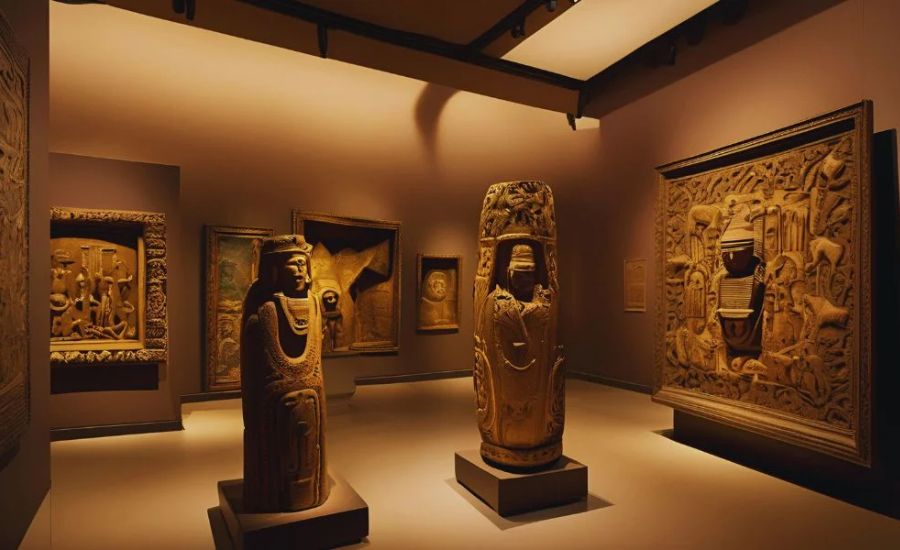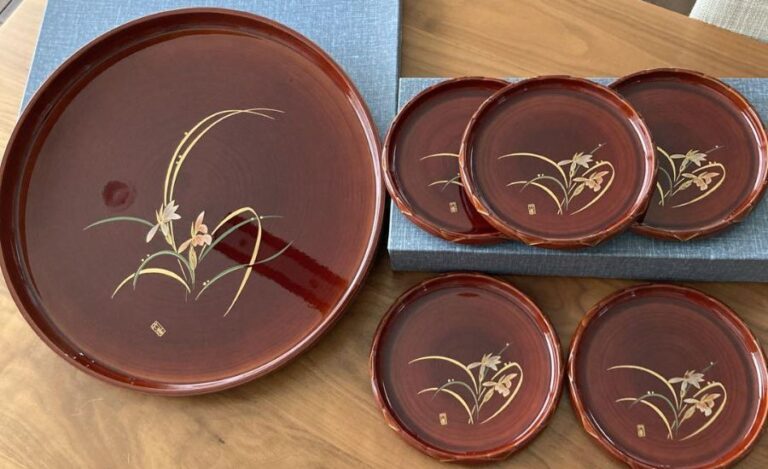Ancient Artz, Civilization, Culture & More
Introduction to Ancient Artz
Craftsmanship has continuously been an basic portion of human history, reflecting not as it were the imagination of our precursors but moreover their profound association with the world around them. From cave canvases to momentous figures, old craftsmanship has captured the soul of human civilization over time and space. In this investigation of antiquated craftsmanship, we set out on a travel through time to reveal the stories, procedures, and implications behind the perfect works of art of old societies that proceed to rouse us today.
The Birth of Craftsmanship: From Cave Dividers to Civilization
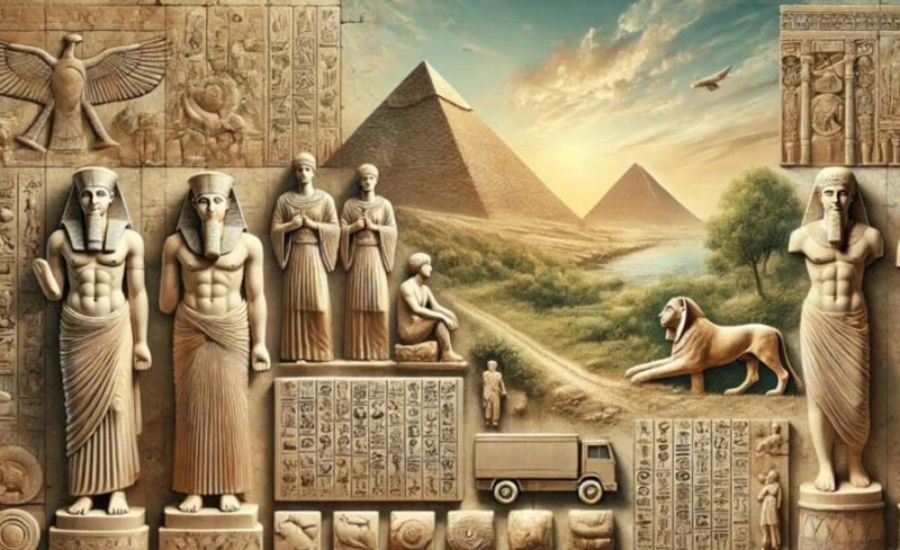
The roots of craftsmanship follow back to the day break of humankind itself. Early people, endeavoring to communicate, express themselves, and get it their environment, turned to the dividers of caves as their canvas. The celebrated cave canvases of Lascaux in France, dating back over 17,000 a long time, serve as a few of the most punctual known cases of ancient craftsmanship. These complicated pictures of creatures, human figures, and theoretical images offer a see into the minds of our far off precursors. The reason of these works remains a subject of insightful debate—were they a frame of otherworldly custom, a instrument for chasing enchantment, or essentially an early expression of imagination? Notwithstanding of their work, these early cave canvases speak to a principal perspective of human behavior: the crave to take off a check, to communicate with others, and to make sense of the world.
As humankind advanced, so did its imaginative expression. The advancement of farming and the rise of early civilizations like the Sumerians, Egyptians, and Indus Valley people groups driven to modern openings for creative creation. Instep of simply beautifying their homes or caves, these social orders started to construct terrific landmarks, make complex ceramics, and create expand frameworks of visual imagery. The coming of composing systems—like cuneiform in Mesopotamia and symbolic representations in Egypt—further interwoven craftsmanship with communication, empowering the conservation of stories, laws, and devout convictions for future generations.
Art of the Antiquated Close East: The Support of Civilization
The antiquated civilizations of the Close East, especially Mesopotamia, laid the establishment for much of what we consider to be “high” craftsmanship. The Sumerians, Akkadians, Babylonians, and Assyrians all contributed to an aesthetic convention that was as assorted as it was persuasive. The ziggurats of Mesopotamia, towering ventured pyramids made of mud brick, served not as it were as sanctuaries to the divine beings but too as images of human exertion to bridge the hole between the soil and the divine. The imaginative themes found in these temples—ranging from complicated bas-reliefs to statues of divine beings and kings—served both embellishing and propagandistic purposes. They were a way of illustrating divine favor and exhibiting the control and riches of rulers.
One of the most celebrated illustrations of antiquated Close Eastern craftsmanship is the Code of Hammurabi, a basalt stele bearing the laws of the Babylonian lord Hammurabi. The carved alleviation at the beat of the stele appears the lord getting the laws from the sun god Shamash, fortifying the thought that the king’s specialist was supernaturally appointed. This mixing of craftsmanship, law, and religion highlights the interconnecting of craftsmanship and control in the old world.
Another trademark of Close Eastern craftsmanship was its consideration to detail and imagery, especially in the domain of form. The Assyrians were known for their noteworthy stone reliefs portraying illustrious chases, military successes, and legendary scenes. These high-relief carvings not as it were showcased the king’s military ability but moreover illustrated the control of the state and its divine security. The symbolism was both a shape of political publicity and a reflection of the culture’s values.
Themes and Imagery in Old Artz
The craftsmanship of these antiquated civilizations was never fair approximately excellence or enhancement; it was profoundly typical, reflecting the community’s values, convictions, and social pecking order. For occasion, in Egyptian craftsmanship, the pharaohs were regularly delineated at a much bigger scale than standard figures, symbolizing their god-like status. Essentially, Greek craftsmanship regularly utilized mythology to investigate topics of courage and profound quality, a reflection of their societal ideals.
Enduring Affect of Old Artz on Advanced Culture
Ancient craftsmanship significantly impacts present day culture, impacting everything from structural plan to the philosophical underpinnings of modern social orders. Building components such as the Greek columns and Roman curves have been consistently coordinates into present day buildings, reflecting an persevering bequest that emphasizes symmetry, work, and excellence. These classical plans proceed to reverberate in today’s structural styles, from government buildings to instructive educate, exhibiting the immortal offer and common sense of old innovations.
Furthermore, antiquated craftsmanships offer wealthy stories that proceed to motivate present day media, counting writing, film, and visual expressions. Legendary topics and typical themes from antiquated Egypt, Greece, and Rome are woven into modern narrating, giving a widespread dialect that rises above time and social obstructions. This social progression not as it were enhances imaginative expressions but moreover makes a difference keep up a association to our chronicled roots, highlighting the profound human crave to investigate and get it the existential questions that have molded human civilization since its dawn.
The Part of Materials and Strategies in Antiquated Artz
Artists of antiquated times were constrained by the materials accessible in their common environment, however they regularly turned these impediments into qualities. In Mesopotamia, the copious clay driven to the advancement of ceramics and bricks, whereas in Greece, the predominant marble was changed into statues that have captivated the world. The procedures advanced over time, from fundamental carving and modeling to more complex strategies like bronze casting and fresco portray, permitting for more prominent expression and detail.
Preservation and Present day Discoveries
One of the greatest challenges in the think about of Old Artz is conservation. Natural conditions, human clashes, and time have all taken their toll on these old works. In any case, cutting edge prehistoric studies and innovation have played vital parts in the conservation and understanding of these artifacts. Methods like carbon dating, 3D mapping, and computerized recreations have revolutionized our capacity to consider and protect old craftsmanship forms.
Greek Craftsmanship and its Affect on the World
Classical Greek Sculptures
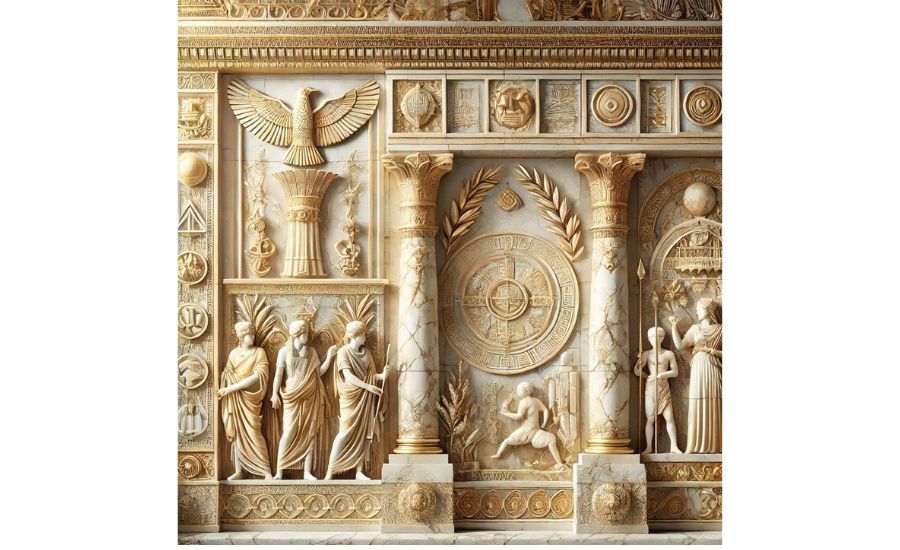
The Greeks are eminent for their authority of design. Their similar statues of divine beings, competitors, and logicians illustrated not as it were specialized ability but too their fixation with flawlessness. Classical Greek craftsmanship pointed to speak to the human body in its most perfect shape, and their figures still impact craftsmen today.
Pottery and Frescoes in Antiquated Greece
Greek earthenware was moreover a well known medium for narrating. Each pot was unpredictably outlined with scenes from mythology, every day life, or fights. Frescoes decorated the dividers of their homes, including magnificence and culture to each corner of their cities.
Roman Craftsmanship: The Bridge Between Ancient and New
Mosaic Masterpieces
The Romans took numerous signals from Greek craftsmanship but made it their claim. One of their major commitments was the advancement of mosaic craftsmanship. Little pieces of glass or stone were orchestrated to make distinctive pictures of divine beings, scenes, or verifiable events.
Public Landmarks and Statues
Rome was filled with amazing open craftsmanship. From towering statues of sovereigns to triumphal curves that celebrated triumphs, Roman craftsmanship was both a reflection of their control and a update of their achievements.
The Craftsmanship of Antiquated China
Calligraphy and Silk Paintings
In China, calligraphy was more than fair writing—it was a loved craftsmanship shape. The stream of the brush, the adjust of the characters, and the concordance of the ink on paper talked to the more profound reasoning of life. Chinese silk canvases delineated quiet scenes, common magnificence, and the concordance between people and nature.
Terracotta Warriors: Gatekeepers of the Emperor
One of the most shocking revelations in old Chinese craftsmanship is the Earthenware Armed force. Thousands of life-sized warriors were made to secure Head Qin Shi Huang in the life following death. Each figure was one of a kind, displaying the unimaginable aptitude of old Chinese artists.
Art of the Indus Valley Civilization
Figurines and Jewelry
The Indus Valley Civilization delivered excellent dolls and adornments. Made from earthenware and bronze, these things delineated creatures, gods, and ordinary individuals, illustrating their progressed making techniques.
Seals and Pottery
Indus ceramics and seals were moreover complex and well-designed. These seals, regularly embellished with creatures or typical markings, are accepted to have been utilized for exchange or devout purposes, speaking to the significance of craftsmanship in both every day life and commerce.
Pre-Columbian Craftsmanship of the Americas
Mayan and Aztec Art
The Mayan and Aztec civilizations made dazzling craftsmanship that reflected their devout convictions and progressed information of space science. Mayan wall paintings and carvings delineated divine beings and firmament occasions, whereas Aztec craftsmanship centered on the control and dominance of their empire.
Olmec Colossal Heads
Perhaps the most famous frame of Pre-Columbian craftsmanship is the Olmec colossal heads. These monster stone figures, accepted to speak to rulers, grandstand the amazing stone-working aptitudes of the Olmec civilization.
African Craftsmanship: The Overlooked Treasures
Rock Craftsmanship of the Sahara
Africa’s old craftsmanship is regularly neglected, but the landmass is domestic to a few of the most punctual shapes of human imagination. Shake craftsmanship found in the Sahara Forsake dates back thousands of a long time and portrays early life, chasing scenes, and otherworldly practices.
Wooden Figures and Masks
African wooden figures and veils are eminent for their typical and otherworldly significance. These pieces were frequently utilized in ceremonies and ceremonies, with each carving speaking to precursors, divine beings, or spirits. The complex craftsmanship of these figures has impacted not as it were African societies but moreover present day craftsmanship developments around the world.
Egyptian Craftsmanship: Unceasing and Unchanging
Perhaps no other culture’s craftsmanship is as synonymous with the old world as that of Egypt. For over three centuries, Egyptian craftsmen kept up a unmistakable fashion that remained surprisingly steady, following to strict traditions that emphasized arrange, adjust, and interminable life. Egyptian craftsmanship was personally tied to religion and the life following death, and its essential work was to honor the divine beings and guarantee the proceeded presence of the expired in the afterlife.
One of the most famous shapes of Egyptian craftsmanship is the tomb portray. In tombs and burial chambers, craftsmen would make scenes of day by day life, delineating everything from feasts and chasing trips to devout ceremonies and offerings to the divine beings. These works were outlined to give the perished with everything they might require in the the great beyond, making a striking and idealized form of their life on earth.
Statues of pharaohs, divine beings, and unmistakable people were moreover necessarily to Egyptian craftsmanship. The colossal statues of pharaohs like Ramses II at Abu Simbel, carved straightforwardly into the shake confront of a mountain, epitomize the colossal control and divine right of Egypt’s rulers. The figures were frequently depicted with profoundly stylized, idealized features—broad shoulders, quiet faces, and grave expressions—symbolizing the lastingness and heavenly nature of the king’s reign.
Greek and Roman Craftsmanship: The Interest of Perfection
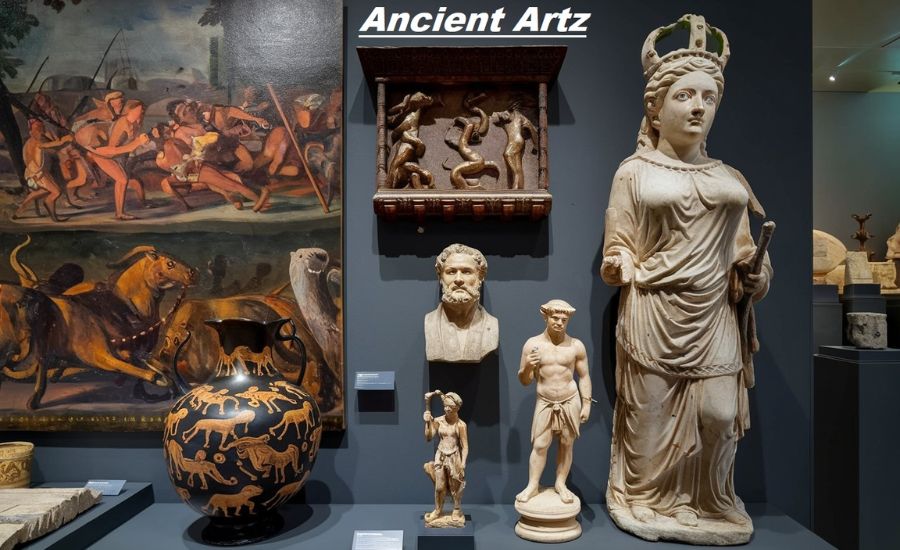
As the old world advanced, the craftsmanship of Greece and Rome risen as a central impact on Western culture. Greek craftsmanship, in specific, is known for its center on humanism, the celebration of the human frame, and the interest of idealized magnificence. Greek craftsmen looked for to capture the human body in its most culminate and concordant extents, making figures that epitomized the standards of adjust and extent. The Discobolus (Disk Hurler) by Myron, and the Venus de Milo by Alexandros of Antioch are among the most celebrated illustrations of Greek design, speaking to the human body as a demonstrate of flawlessness and beauty.
Greek craftsmanship was moreover profoundly affected by mythology and religion, with numerous figures and canvases portraying divine beings, heroes, and legendary scenes. The Parthenon in Athens, with its nitty gritty frieze and terrific structural plan, is one of the most celebrated illustrations of Greek imaginative accomplishment. The frieze itself delineates a parade in honor of the goddess Athena, displaying the creative expertise of Greek artists and the central part of religion in Greek society.
Roman craftsmanship, whereas intensely impacted by Greek conventions, took a more down to earth approach. Romans were less concerned with idealized excellence and more centered on authenticity and the documentation of their society. Representation was a critical perspective of Roman craftsmanship, with busts of heads, officers, and striking figures made in strikingly practical detail.
Facts:
- Origins of Art: Early humans expressed themselves through cave paintings, such as those in Lascaux, France, dating back over 17,000 years. These artworks may have served as spiritual rituals, hunting magic, or creative expression.
- Ancient Civilizations and Art:
- Mesopotamia: Known for ziggurats and bas-reliefs, art often showcased religious, political, and social themes, such as the Code of Hammurabi.
- Egypt: Focused on eternal life and religious rituals. Art, such as tomb paintings and statues, emphasized balance, symmetry, and the afterlife.
- Greece: Celebrated humanism and perfection. Classical sculptures and architectural feats, like the Parthenon, reflected ideals of beauty, mythology, and harmony.
- Rome: Adapted Greek styles but leaned towards realism. Mosaics, statues, and public monuments documented society and emphasized political achievements.
- China’s Art: Calligraphy and silk paintings reflected philosophy and harmony. The Terracotta Army demonstrated advanced artistic skills in ancient China.
- Pre-Columbian Art: The Olmec colossal heads, Mayan murals, and Aztec carvings showcased their cultural advancements in astronomy and religion.
- African Art: Rich rock art in the Sahara and wooden figures and masks symbolized spiritual and ancestral connections.
- Enduring Influence: Ancient art continues to inspire modern architecture, storytelling, and artistic movements. Greek columns, Roman arches, and mythical themes have enduring legacies.
- Preservation Techniques: Modern technologies like carbon dating, 3D mapping, and digital reconstructions play a key role in understanding and conserving ancient art.
Summary:
Ancient art represents humanity’s creative journey, reflecting cultural beliefs, technological advancements, and societal structures. Starting with cave paintings in Lascaux, art evolved alongside civilization, taking various forms like Mesopotamian ziggurats, Egyptian tombs, Greek sculptures, and Roman mosaics. Each civilization’s art held profound symbolic, religious, and political meanings, emphasizing perfection, realism, or spirituality. Techniques and materials like clay in Mesopotamia, marble in Greece, and silk in China shaped their artistic expressions. Despite challenges of preservation, modern tools allow us to uncover ancient art’s timeless influence on culture, architecture, and storytelling today.
FAQs:
- What is the oldest known example of art?
- The Lascaux cave paintings in France, dating back over 17,000 years, are among the oldest known examples of art.
- How did ancient civilizations use art?
- Ancient civilizations used art for religious rituals, storytelling, propaganda, and documenting daily life or societal values.
- What materials did ancient artists use?
- Mesopotamians used clay, Egyptians used limestone and papyrus, Greeks used marble, and Chinese artists used silk and bronze.
- What are some famous works of ancient art?
- The Code of Hammurabi (Mesopotamia), the Great Sphinx (Egypt), the Parthenon frieze (Greece), and the Terracotta Army (China).
- What is the significance of Greek art?
- Greek art focused on humanism, symmetry, and perfection, influencing Western art through its celebration of beauty and mythology.
- How did the Romans differ from the Greeks in art?
- Romans adapted Greek ideals but focused more on realism and practical uses, creating lifelike busts and public monuments.
- Why is Egyptian art consistent over centuries?
- Egyptian art adhered to strict conventions emphasizing balance, order, and eternal life, rooted in their religious beliefs.
- How is ancient art preserved today?
- Techniques like carbon dating, 3D mapping, and digital recreations are used to preserve and understand ancient artworks.
- What is the role of mythology in ancient art?
- Mythology provided themes and symbols that depicted cultural beliefs, heroism, and divine influence, particularly in Greek, Roman, and Mayan art.
- How does ancient art influence modern culture?
- Ancient designs like Greek columns and Roman arches influence architecture, while mythical themes shape storytelling in films and literature.
For more Information About Art visit idealrular
